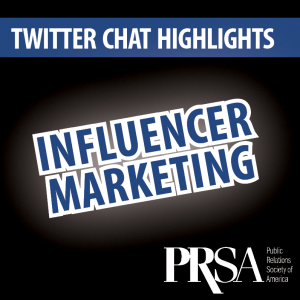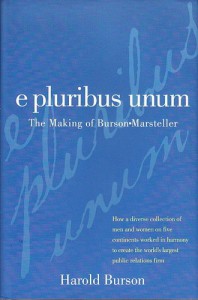 Must be 21+
Must be 21+
Tweeting to a minor is as bad as serving a minor. You don’t want to be that brand that is associated with underage drinking. Unless your account has an age verification prompt, be prepared to dig into the backgrounds of customers who interact with you. Yes, it takes cyber stalking to a new level, but it’ll enhance your engagement with the customer. Knowing a little about about more about the customer allows you to change your tone or tailor your response. Best rule of thumb? If you think they’re under 21, don’t respond.
Lesson to be learned: Know your audience.
It’s science
Understanding the distillation and brewing process will help you tremendously. It will come in handy when writing a press release about a new beer on your shelf or a wine you’re tweeting about with a customer. Not only will it save you time gathering information on the product, but you’ll understand how it’s created. Your vocabulary will be filled with keywords or phrases typically used to explain the products, making your job that much easier. It’ll eventually flow from you quicker than whiskey out of a barrel.
Lesson to be learned: Understand the product.
Do your homework
Think back to when you started applying for jobs. (I know, I know. I try to block it out, too.) You probably spent endless hours researching the agency’s clients, their award winning case studies and even memorizing their mission statement. The liquor industry requires that kind of attention, but in a few different ways. Each state has their own set of rules and regulations when it comes to selling, distributing and shipping wine, beer, liquor, tobacco, etc. Whether you work for a national brand or a small liquor chain, understand these rules. Questions like, “Can you ship to ___?” or “Why don’t you carry ___ beer?” pop up a lot.
Lesson to be learned: Listen. (And ask a ton of questions.)
It’s good to have options
Not into corporate or retail PR? Not a problem. Tons of PR agencies represent major beer, wine and spirit brands. Heck, GolinHarris just landed Diageo. You could even work for a distributor, a supplier, a bar or event planning team all under the umbrella of public relations within the beverage industry. If you’re serious about getting into the industry, spend time networking at beer events, talk to your neighborhood wine guy or even chat up the bartender at the whiskey bar. Remember: Just like in PR, it’s a small world. Everyone knows everyone.
Lesson to be learned: There are many paths for you to enter the industry.
What do you like to drink? Everything.
From barrel aged beer to jammy cabernet to… well… Malort. Being open to tasting everything will not only build your palate but expand your knowledge across the field. It’s key to be well rounded in the beverage industry. Brewers, distillers and winemakers take their time to execute the perfect product that will eventually be poured into your glass. It’s an art meant to be enjoyed… and occasionally cause a hangover, but that’s beside the point. Swirl, smell, sample, taste, indulge. Enjoy the craft, but don’t forget to…
Lesson to be learned: Enjoy the product you sell.
R-E-S-P-E-C-T
Sure, brands like Budweiser or Yellow Tail always don’t have the best rep, but they are still enjoyed by many. Before you snub them, understand that craft beer and high end wines only make up a fraction of industry sales. The beer and liquor you find piled high in stacks to the ceiling are the brands that support a majority of your business. It’s easy to want to side with the little guys but don’t forget about the big boys, too.
Lesson to be learned: Believe in what you promote.
 Hilary Jurinak is a Communications Coordinator at Binny’s Beverage Depot in Illinois. She is programming co-chair on the PRSA new professionals committee and a former member of the PRSSA national committee. She can be reached on Twitter at @HilaryJurinak.
Hilary Jurinak is a Communications Coordinator at Binny’s Beverage Depot in Illinois. She is programming co-chair on the PRSA new professionals committee and a former member of the PRSSA national committee. She can be reached on Twitter at @HilaryJurinak.
 Specifically, we’d like to thank Mark Fidelman, CEO of Raynforest and author of Socialized!
Specifically, we’d like to thank Mark Fidelman, CEO of Raynforest and author of Socialized! Lauren Rosenbaum is the PRSA New Professionals Social Media Co-Chair and Co-Founder of Soversity, a public relations and digital marketing company. You can connect with her on Google+, LinkedIn or Twitter.
Lauren Rosenbaum is the PRSA New Professionals Social Media Co-Chair and Co-Founder of Soversity, a public relations and digital marketing company. You can connect with her on Google+, LinkedIn or Twitter.


 Those of you who are just starting out in your careers can probably remember the college professors who, not very long ago, did the best job motivating you, captivating you and exposing you to the possibilities in the world. We need more teachers like that in the public relations profession. We’re talking about teachers who can bring a combination of real-world experience and in-depth knowledge of the profession to the classroom.
Those of you who are just starting out in your careers can probably remember the college professors who, not very long ago, did the best job motivating you, captivating you and exposing you to the possibilities in the world. We need more teachers like that in the public relations profession. We’re talking about teachers who can bring a combination of real-world experience and in-depth knowledge of the profession to the classroom.
 March is Women’s History Month. I wanted to get inspired, so I decided to read Sheryl Sandberg’s,
March is Women’s History Month. I wanted to get inspired, so I decided to read Sheryl Sandberg’s,  Emily Suied is a public relations professional in Chicago. She is a member of PRSA Chicago and serves on the Young Professional Network committee. Emily graduated from the University of Texas at Arlington and was the president of its PRSSA chapter. Connect with Emily on her
Emily Suied is a public relations professional in Chicago. She is a member of PRSA Chicago and serves on the Young Professional Network committee. Emily graduated from the University of Texas at Arlington and was the president of its PRSSA chapter. Connect with Emily on her 
